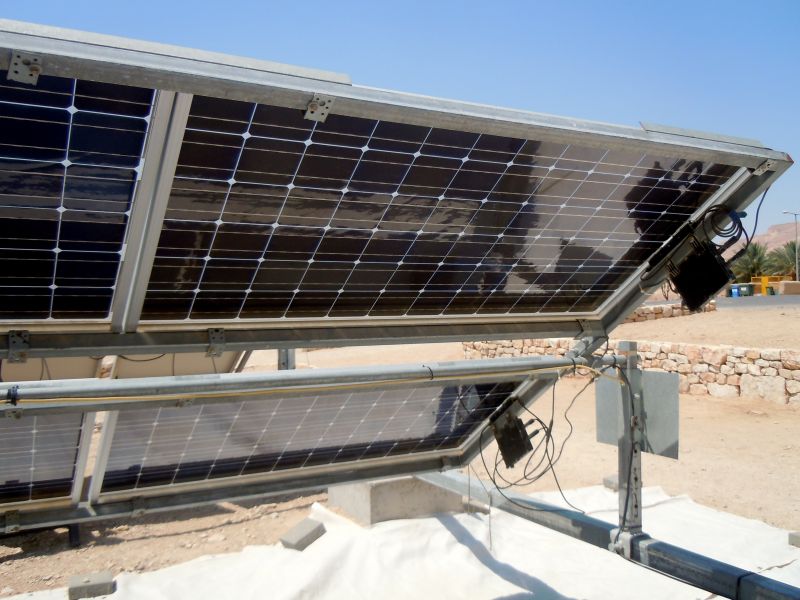Most of today’s solar panels capture sunlight and convert it to electricity only from the side facing the sky. If the dark underside of a solar panel could also convert sunlight reflected off the ground, even more electricity might be generated.
Double-sided solar cells are already enabling panels to sit vertically on land or rooftops and even horizontally as the canopy of a gas station, but it hasn’t been known exactly how much electricity these panels could ultimately generate or the money they could save.
A new thermodynamic formula reveals that the bifacial cells making up double-sided panels generate on average 15% to 20% more sunlight to electricity than the monofacial cells of today’s one-sided solar panels, taking into consideration different terrain such as grass, sand, concrete and dirt.
The formula, developed by two Purdue University physicists, can be used for calculating in minutes the most electricity that bifacial solar cells could generate in a variety of environments, as defined by a thermodynamic limit.
“The formula involves just a simple triangle, but distilling the extremely complicated physics problem to this elegantly simple formulation required years of modeling and research. This triangle will help companies make better decisions on investments in next-generation solar cells and figure out how to design them to be more efficient,” said Muhammad “Ashraf” Alam, Purdue’s Jai N. Gupta Professor of Electrical and Computer Engineering.
Alam’s approach is called the “Shockley-Queisser triangle,” since it builds upon predictions made by researchers William Shockley and Hans-Joachim Queisser on the maximum theoretical efficiency of a monofacial solar cell. This maximum point, or the thermodynamic limit, can be identified on a downward sloping line graph that forms a triangle shape.
The formula shows that the efficiency gain of bifacial solar cells increases with light reflected from a surface. Significantly more power would be converted from light reflected off of concrete, for example, compared to a surface with vegetation.
The hope is that these calculations would help solar farms to take full advantage of bifacial cells earlier in their use.
“It took almost 50 years for monofacial cells to show up in the field in a cost-effective way,” Alam said. “The technology has been remarkably successful, but we know now that we can’t significantly increase their efficiency anymore or reduce the cost. Our formula will guide and accelerate the development of bifacial technology on a faster time scale.”
Experts estimate that by 2030, bifacial solar cells will account for nearly half of the market share for solar panels worldwide.
(Source: Purdue University)






